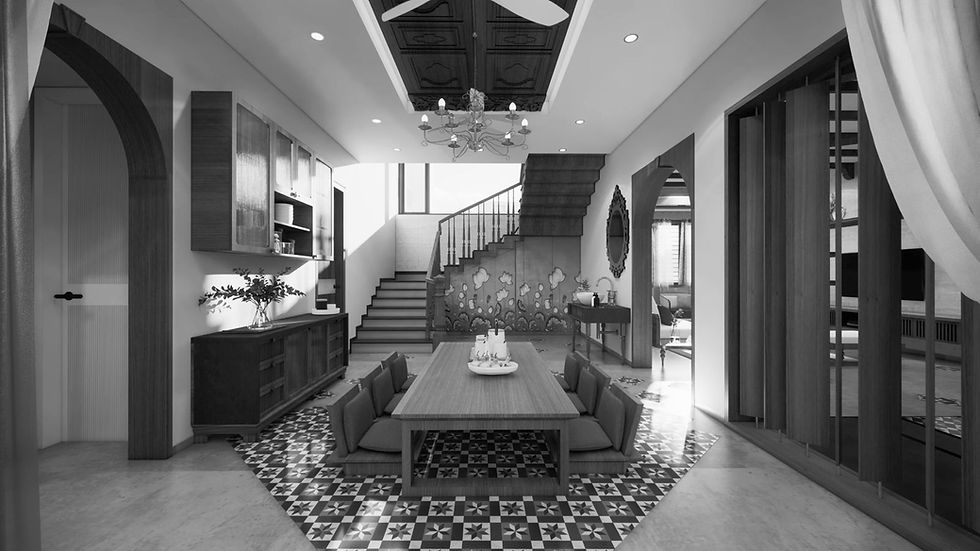The Secret Sauce Behind the Top Architects & Interior Designers in India
- SLA

- Apr 28
- 3 min read
Updated: May 6

A quiet look at what truly defines meaningful, lasting design across the country.Beyond the Brief
In India, architecture is never just about buildings. It is about memory, climate, rhythm, and people. The top architects & interior designers in India don’t simply draw clean lines or follow global trends—they root their work in the place it comes from. Their designs are shaped as much by human behaviour as by materiality, offering spaces that don’t just look good but feel deeply lived in.
At SLA, we’ve come to understand that this difference lies in how we listen, observe, and build with quiet purpose.
A Language of Local Materials
There is an elegance in using what’s around you. The best architects and designers across the country are increasingly turning to native materials—not just for their aesthetic value but for their honesty.
In Kaarai Kudil, for instance, Athangudi tiles, reclaimed wood, and textured concrete come together in a Chettinad-inspired palette that feels timeless. In Aangan, patterned tiles and lime plaster soften the structure while paying homage to craft traditions that span generations. These choices aren’t nostalgic—they’re necessary, grounding homes in both climate and culture.
Planning That Responds to Life
Great spatial planning rarely calls attention to itself. It quietly supports the routines and rituals of the people living within. Across projects—from Modern Muse with its central courtyard lit by a pergola, to IKI Haus, where natural light pours in through a rear courtyard—flow and function are never afterthoughts.
The top architects & interior designers in India recognise that it’s not about creating the most impressive structure. It’s about creating a place that holds daily life with grace.
A Mix of Restraint and Boldness
In Chennai, IKI Haus is a masterclass in quiet restraint. Inspired by Japandi principles, it speaks in soft sage greens, shoji screens, and warm lime walls. On the other hand, SPR H2101 plays with contrast—French beading, pastel doors, and layered materiality creating a home that’s full of personality yet deeply refined.
The secret isn’t in choosing one over the other. It’s in knowing what to dial up and what to let recede.
Furniture That Feels In Place
Custom furniture isn’t a luxury. It’s a natural extension of considered architecture. From the curved wooden details in Vishranthi to the muted, tailored upholstery in A Timeless Haven, the furniture here is not decoration. It belongs—functionally, emotionally, spatially.
Designers like SLA often develop bespoke pieces that respond to the room’s light, material, and proportions. This intentionality adds a quiet depth to every corner.
FAQs
1. What sets the top architects & interior designers in India apart?
They design with a strong sensitivity to context—blending regional materials, local techniques, and modern functionality in considered ways.
2. Are traditional Indian elements still relevant in contemporary design?
Absolutely. Elements like courtyards, verandahs, carved wood, and native flooring are being reinterpreted to suit modern lives.
3. Why do many homes focus on light and ventilation?
India’s climate demands responsive design. Good spatial planning, cross-ventilation, and passive lighting are central to comfort.
4. How do these designers work with furniture?
Rather than sourcing mass-market pieces, they often create bespoke items that suit the scale, tone, and rhythm of the space.
5. Can high-quality design still feel personal?
Yes. The most memorable homes are those that reflect the people who live in them through detail, material, and memory.



Comments